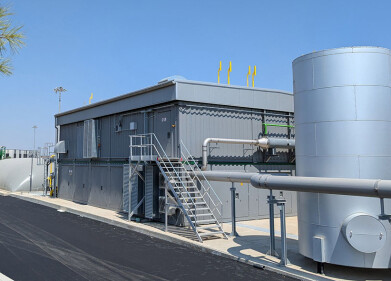Air clean up
10 Tell-Tale Signs of Air Pollution
Sep 15 2014
Air pollution, usually caused by the burning of fossil fuels either in the engine of a vehicle or in a power plant, can have serious effects for the health of humankind. As well as causing and exacerbating a plethora of respiratory diseases, new research shows that air pollution exposure increases autism risks as well.
However, over the course of the last 25 years, air pollution checks and controls have been put into place to try and limit the resulting damage. Indeed, in a survey carried out in North Carolina, USA, earlier this year, it was found that the number of fatalities caused by pneumonia, asthma and emphysema had fallen since these controls came into play. For more information, see the article: Air Pollution Controls "Lower Respiratory Illness Death Rates".
In order to try and determine whether the air in your surrounding environment is pollution-free, look out for these 10 tell-tale signs of contaminants:
1) Breathing Difficulties
The simplest way to tell if air is polluted is to look at how it affects us. Respiratory problems, congestion of the sinuses and sneezing, prolonged coughing or wheezing, or just plain old difficulty when breathing could all be signs of air pollution.
2) Watery Eyes
If your eyes are constantly streaming, it could be because a high level of bacteria or pollutants in the air. Or it could be because you just chopped onions.
3) Worsening Allergy Problems
If you suffer from asthma, hay fever or other respiratory problems, and notice the symptoms becoming more pronounced, it could be due to poor air quality.
4) Nausea/Dizziness/Headaches
Again, breathing in polluted air can manifest itself in all sorts of ailments. Sore heads, nausea or a general feeling of sickness could be attributed to air pollution.
5) Smog
Smog and smoke discolours the air, producing soot, which clings to buildings and plants and is capable of doing damage to them. It can also be a cause of shortness of breath, since it permeates the air and makes it more difficult for you (and other organisms) to breathe.
6) Poor Visibility
Again, smog or smoke or other contaminants can make it difficult to see over long distances.
7) Unpleasant Odour
Pollutants often have unpleasant or unusual odours, especially sulphur dioxide, which has a festering, rotten smell and is a contributing factor to acid rain.
8) Sparseness of Bushy or Leafy Lichens
Lichens are a great natural barometer of air quality, since they need to absorb the nutrients from rainwater. Contaminated water will damage or kill off bushy and leafy lichens, both of which require fairly clean air.
9) Crusty Lichens
Crusty lichens are more adept at surviving in polluted air conditions, so if you spot an abundance of crusty mosses, but few bushy or leafy ones, the air quality is probably poor.
10) Blackspot Fungus
This fungus is killed by sulphur dioxide, so if you see it growing on roses (it’s favourite stomping ground), it’s a good indicator that the air quality in the area is decent.
Can you think of another tell-tale sign of air pollution? Let us know in the comments section.
Events
May 18 2025 Algiers, Algeria
23rd International Water Management Exhibition
May 20 2025 Prague, Czech Republic
Jun 17 2025 Guangzhou, China
Singapore International Water Week Spotlight 2025
Jun 23 2025 Singapore
Jun 25 2025 Sao Paulo, Brasil














